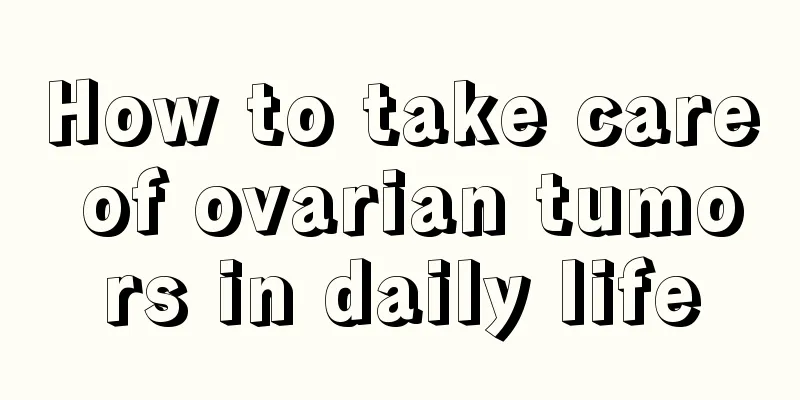What to do with lumbar vertebrae fracture, scientific treatment is crucial

|
The treatment method for lumbar vertebrae fractures must be scientific. In many cases, patients cannot be sent to the hospital in time when fractures occur. At this time, it is very important to know some first aid measures, understand the cause of the injury, close the wound, and stop the bleeding in time. 1. What to do if you have a lumbar fracture 1. Cervical vertebra fracture: One person holds the occipital area and mandible with both hands to maintain the position of the neck after injury, while the other two people hold up the waist, back, buttocks and lower limbs respectively. 2. Thoracolumbar fracture: One person holds the head and neck, two others hold the thoracolumbar region and buttocks on the same side, and another person holds both lower limbs to maintain the position of the spine after injury. 3. Hip and thigh fractures: One person supports the waist and buttocks with both hands, the injured person hugs the rescuer's shoulders and back with both arms, and the other person supports the injured person's lower limbs with both hands. Second, the first aid treatment of fractures: (1) Determining fractures: First, we need to consider the cause of the injury. If it is caused by a car accident, a fall from a height, or a machine injury, there is a high possibility of a fracture. Secondly, we need to look at the condition of the injured person. If the injured limb shows abnormal movement, or there is obvious swelling and pain, there is a high possibility of a fracture. If the fracture end is exposed, there is definitely a fracture. If it is unclear whether there is a fracture, it should be treated as a fracture. (2) Close the wound: For patients with fractures and wounds, the wound should be closed immediately. It is best to cover the wound with a clean piece of cloth or clothing, and then bandage it with a cloth tape. When bandaging, it should not be too tight or too loose. If it is too tight, it will cause ischemia and necrosis of the injured limb. If it is too loose, it will not have the effect of bandaging, nor will it have the effect of compressing and stopping bleeding. If the fracture ends are exposed, be careful not to put them back to their original positions and keep them exposed to avoid deep infection. If the fracture ends are returned to their original positions, this should be noted and explained clearly to the doctor during evacuation. (3) Stop bleeding: Methods include: Use manual pressure to stop bleeding: If the amount of bleeding is large, press the upper end of the bleeding area against the adjacent bone protrusion or bone shaft with your hand. Use clean gauze or cloth to apply pressure to stop the bleeding, and then wrap it with a wide cloth tape to secure it, using appropriate force but not too tight. Do not use objects with thin diameters such as electric wires and wires to stop bleeding. If a tourniquet is available, you can use it to stop the bleeding. If there is no tourniquet, a cloth tape can be used. When bleeding occurs in the upper limbs, the tourniquet should be placed in the upper middle part of the upper arm, and not in the lower 1/3 or the elbow. To prevent nerve damage. When stopping bleeding in the lower limbs, the tourniquet should be placed in the middle of the thigh and not in the lower 1/3 of the thigh, the knee or the upper leg. When applying a tourniquet, place a pad. The time for applying tourniquet should not exceed 1 hour for upper limbs and 1.5 hours for lower limbs. (4) Temporary fixation: Position of the injured limb: Keep the injured limb in the post-injury position as much as possible and do not pull or move the patient arbitrarily. Choice of fixation equipment: It is best to use a splint for fixation. If there is no splint, you can use local materials. In mountainous areas, you can use sticks or branches; in factories, you can use cardboard or machine handles; on battlefields, you can use guns. When nothing is available, self-fixation can be used, such as the upper limbs can be fixed to the trunk, and the lower limbs can be fixed to the opposite side. The fingers can be fixed with adjacent fingers. |
<<: Is blood sugar of 10.3 after a meal high? You need to know the diagnostic criteria for diabetes
>>: Can eating fried prawns with the skin on supplement calcium? Don't eat them at night
Recommend
What are the dangers of parotid gland tumor?
Some people think that parotid tumors are not ser...
What are the dietary conditioning methods for lung cancer? Lung cancer patients are advised to eat like this
I believe we often hear about lung cancer in our ...
How to deal with tear troughs in the eyes?
Eyes are a visual organ that play an important ro...
Survey found: my country has become the world's largest lung cancer country
According to survey results, the incidence of lun...
How to preserve pear pollen
Pollen mainly comes from a substance in the stame...
There are so many benefits of sleeping naked for girls
In life, many female friends choose to sleep nake...
Five ways to relieve tooth pain caused by cold or heat
Nowadays, people's pace of life is very fast,...
What medicine is used for vesicular tinea pedis?
Ringworm is a common skin disease and a serious s...
How effective is Qizao oral liquid in removing lead?
Qizao oral liquid is a relatively common children...
What material is good for dentures
Many elderly people worry more or less about dent...
Is it normal to have occasional insomnia?
Insomnia is becoming more and more common in our ...
What should you pay attention to in order to prevent cervical cancer? Women must know these 4 things in order to prevent cervical cancer
Cervical cancer is preventable. Because the cause...
Why do red moles appear in the early stages of liver cancer and what should we do
Red moles in the early stages of liver cancer are...
Is it possible to treat thyroid cancer without radiotherapy?
Whether thyroid cancer patients need radiotherapy...
How to massage for cerebral infarction_Massage methods for rehabilitation of cerebral infarction
Once the human body develops some brain diseases,...









